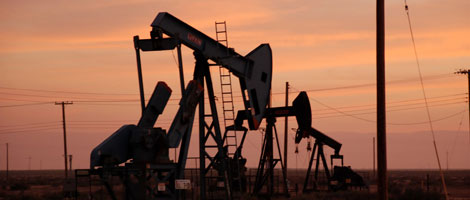Oil prices are higher–much higher–today after a drone attack on Saudi Arabia’s Abqaiq processing center knocked out 50% of the country’s oil production. As of 1 p.m. New York time U.S. benchmark West Texas Intermediate was up 13.58% to $62.30 a barrel. International benchmark Brent crude was up 13.67% to $68.45 a barrel.
Where do oil prices go from here?
First, note that while the attack put 50% of Saudi Arabia’s production out of commission that still represents just 5% of global supply. All reports indicate that there’s plenty of oil in the system to cover the near-term shortfall.
Second, “near-term,” yes. But how long will it take for Saudi production to be restored to full pre-attack levels? The projections right now are that a “significant” amount of production, perhaps as much as 50%, will be stored in a matter of days. Restoring the rest will take weeks.
Third, even when production is restored, the effects of the attack will linger. The biggest long-term effect–short of large scale military action in the area–will be to re-price risk in the oil market. After this attack, it will be much harder for oil markets to gloss over the fragility of Middle East production.
Fourth, will the Saudis and the United States respond with an attack on Iran? Houthi rebels fighting the government of Yemen in a prolonged civil war with Iranian backing have claimed credit for the attack on Abqiaq. The initial Saudi and U.S. response was that the weapons used were beyond the capacity of the Houthi rebels and that they were launched from somewhere else than Yemen. The two countries have raised the possibility that they were launched from Iraq (the Iraqis say No way) or Iran. Analysis of the wreckage says the equipment used in the drone was Iranian in source whatever the location of the launch. U.S. Secretary of State Mike Pompeo was first out of the box on Twitter, blaming Iran for the attack and saying, on Saturday, that the attack did not come from Yemen, Pompeo did not offer any evidence for that claim, which, especially given the speed of his response, raised the possibility that the Secretary of State didn’t have any evidence, but that it, worryingly, indicated a continued preference in the administration for an attack on Iran. President Donald Trump quickly tweeted after the attack that the U.S. military is locked and loaded and is just waiting to hear from Saudi Arabia how that country would like to respond. The implication–that an attack by the U.S. military depends on a decision by the Saudi government–has rattled some Middle East experts and the oil market. The market is very aware that a U.S. or U.S.-backed attack on Iran will be met with retaliatory attacks on oil shipments through the Gulf of Hormuz. The Houthi rebels, for their part, have warned of further attacks.
As of 1 p.m. New York time the few oil stocks that I still own in my online portfolios were up significantly on news of the supply disruption. Shares of Pioneer Energy (PDX) and Parsley Energy (PE), both big producers from U.S. oil shales, were top 4.35% and 6.76%, respectively. Norway’s Equinor (EQNR) was higher by 4.24%.
So far stocks aren’t happy with the news but aren’t startled into a big sell off. As of 1 p.m. the Standard & Poor’s 500 was down 0.38% and the Dow Jones Industrial Average was lower by 0.52%. The iShares MCSI Emerging Markets ETF (EEM) was lower by 0.80%. (Higher oil prices would be a big deal for developing countries.)
The attack comes just days before the Federal Reserve meets (September 18) on interest rates. Will the Fed factor this added uncertainty into its decision on rates and its projections on growth in the U.S. economy.


